Columnar apples and pears: we grow the best varieties
A unique columnar type of fruit trees appeared recently, in the middle of the last century. It is, as it were, specially created for small areas, as it has a compact crown and unbranched root system... Columns of apple and pear trees can be planted tightly, which contributes to high yields.
For columnar varieties of apple and pear, early, sometimes in the year of planting, fruiting is characteristic, which increases in the first ten years, and then declines. The appearance of the trees is also interesting: they rise in columns slender along the paths of the garden. The branches are tightly pressed to the trunk, rushing up, and are completely covered with juicy tasty fruits.
Content:
- The best varieties of columnar apple trees, their features
- Description of popular varieties of columnar pear
- Basic rules for planting fruit trees
- How to care for columnar varieties
- Tips for pruning fruit trees
- Fight against diseases and pests of the fruit garden
The best varieties of columnar apple trees, their features
The selection of columnar apple varieties has been going on actively lately, which contributes to the improvement of their qualities:
- Light yellow fruits with fragrant bright white pulp of the President variety are loved by many gardeners. Apple tree not afraid of frost, has a strong immunity to disease. Apples of this variety are used to make jams, preserves, compotes, because they are not kept fresh for a long time.
- The early ripening variety Dialog is characterized by a high annual yield of small flat fruits with yellow flesh. The roots of the tree are tender, requiring special care when loosening.
- Dessert variety Vasyugan will bestow sweet and sour apples with red striped peel. The tree, three meters high, is not afraid of frosts below forty degrees.
- For Medka, the main feature is high yields - up to six kilograms from one tree. Attracted by the special taste of apples with honey aroma.
- The most delicious fruits are produced by the Malyukha variety, which can grow in the north-western regions. It requires special attention to itself when leaving, otherwise a decrease in yield, crushing of fruits is possible.
All varieties of columnar apple trees are characterized by low keeping quality of fruits, which are good when processed. Trees easily tolerate frosts, differ in the regularity of ripening, more often in the second year after planting.
Description of popular varieties of columnar pear
Pear columns are similar in appearance to apple ones: they are not tall, short branches and a thick trunk. To the most popular varieties columnar pears relate:
- Large elongated fruits with a yellow-green color are produced by the Sapphire variety. At the beginning of September, you can harvest pears from them. Trees tolerate frosts well below twenty degrees.
- The fruits of the Carmen variety have a sweet taste. Their weight reaches three hundred grams, burgundy pears are harvested at the end of summer.
- The Honey pear is famous for its rather large fruits with fragrant sweet pulp, which is distinguished by its unpretentiousness and frost resistance.
- High yields in the middle of autumn pleases Sanremi, and the fruits of a variety with a wonderful taste and aroma. The tree is not afraid of frost, resistant to diseases.
In columnar pears, fruit ripening usually begins in the third year after planting. The advantage of this species is good survival rate, low growth, unpretentiousness in the choice of soil.
Basic rules for planting fruit trees
In order to get the first harvests as soon as possible, it is better to plant columns of pears and apple trees in early spring as the snow melts. To do this, choose a sunny, wind-protected place in the garden area.
There are general rules for planting such trees in specially prepared pits:
- Columnar plants are characterized by a high planting density: at least half a meter between trees, and up to a meter between rows.
- At the bottom of a spacious pit, soil is laid, consisting of a nutrient mixture compost, humus, peat.
- The introduction of potash fertilizers, superphosphate up to one hundred grams per tree is considered a necessity. Organic also do not disdain.
- Then the seedling is placed in the middle of the pit, watered with a bucket of water, followed by filling it with earth.
- A place vaccinations should be on the surface. Small grooves are made around the trunk for top dressing and watering.
- Finish planting with abundant moisture, mulching basal circle. Humus or manure in a ten-centimeter layer is used as mulch. Thanks to this tree, frost and heat are not terrible; it receives additional nutrition from it.
Often, columns of fruit trees are planted along fences, but with the condition that they all belong to the same variety. Planted between seedlings strawberries, cereal or herb type lemon balm, dill... In these cases, the root system of apple and pear trees does not suffer from trampling and deep loosening. And spices also have the ability to scare away harmful insects.
How to care for columnar varieties
Unpretentiousness is one of the advantages of columnar apple and pear trees. Special attention is paid to caring for the tree trunk circle. Here plays an important role mulching, when layers of peat or sawdust are raked to apply fertilizers, then they are applied again. The mulch should not be close to the trunk, which can cause rotting.
From organic dressings, diluted mullein in a ratio of 1: 5, bird droppings - 1:12. The first introduction of them should be at the beginning of May, then - after the flowering of the tree. In autumn, it is enough to feed with infusion wood ashprepared from fifty grams of raw materials in a bucket of water. The fertilizer rate is calculated depending on the fertility of the soil.
Competent care of the planting of columns of pear and apple trees will protect them from diseases, pests, and increase yields.
Columns of apple and pear trees are watered in the same way as fertilizing is applied to the grooves from four to five times during the summer season. In dry years, they are additionally watered a month before fruiting. You can fight spring frosts by watering or spraying trees. In this case, the air temperature in the garden rises, the heat loss of the plant decreases.
Keep the garden warm and smoke heaps, consisting of layers of dry grass, fresh manure, earth. During the night, they are set on fire when the air temperature drops to two degrees above zero. To protect against sunburn, the trunks of plants are whitened with lime at the end of autumn and winter, and then tied with brushwood. For the winter, the trees must be tied to the supports so that the trunk does not break during the wind, and as much snow as possible is raked to the base.
Tips for pruning fruit trees
If it is necessary that fruit trees not only decorate the garden, but also please with high yields, then it is obligatory for them pruning... The procedure will allow you to rejuvenate an apple or pear tree, form a neat crown of the correct shape, remove diseased, old branches.
Pruning rules:
- It is forbidden to touch the apical bud and the central conductor of the column when pruning a plant.
- It is better to cut the branches of a fruit tree once a year or in early spring before flowering, or in summer before fruiting.
- The first year, the lateral branches with flowers are removed, preventing the plant from blooming, since the young tree is not quite strong, does not yet have enough strength for growth and development.
- A year later, the lateral shoots are pinched, and two flowers are left in the inflorescences. Thanks to this procedure, there will be few fruits, but they will grow large and healthy.
- Only the lateral branches are cut annually, leaving from three to five buds on them, on a young plant - two.
- After the winter period, thin, diseased branches, as well as damaged and dry ones, are removed; in the fall, thickened plantings are thinned out.
A well-done pruning process will improve the decorative look. apple trees, pears, increase the number of fruits from the tree.
Fight against diseases and pests of the fruit garden
Fruit trees are often exposed to pathogenic viruses, fungi that are detrimental to the health of the plant. Parasites lead to rotting of the root system, falling leaves and flowers.
When an apple tree is infected, pears begin to wither, give deformed, diseased fruits.
The most dangerous disease for apples and pears is scab, especially during periods of high humidity. If the leaves on the tree begin to turn brown and fall off, then it means that it has become infected with this infection. To prevent the disease, trees are sprayed with a solution of Bordeaux liquid before the foliage unfolds and after flowering. A five percent solution of ferrous sulfate, used in early spring for processing plants, also helps.
There are many pests in the orchard:
- Caterpillar the codling moth damages apples, pears, and they fall off prematurely. For adult butterflies, traps are made by pouring kerosene diluted with water into containers, illuminating them with a light bulb. Mothballs hung on the branches scare away flying parasites.
- When the appearance aphids spraying with tobacco broth will help on the leaves: a kilogram of makhorka is bred in half a bucket, boiled for an hour, insisted for a day. You can add one hundred grams of laundry soap to it.
- Great damage to the columns of pears and apple trees is caused by the caterpillars of the hawthorn, eating the buds, flowers, leaves. In the fall, they hide in the fallen leaves, fastening the shelter with cobwebs. At the beginning of winter, it is recommended to find nests and destroy them. Spraying with insecticidal preparations will also save them from them. By removing and burning fallen leaves in time, you can save garden plantings from a terrible pest.
- Spider mites are best lime with a lime-sulfur broth or colloidal sulfur (one hundred grams of powder per bucket of water). The broth is prepared from a kilogram of sulfur in the form of a powder, half a kilogram of slaked lime and ten liters of water. The composition is boiled over low heat until it acquires a cherry color. The infusion of onion husks, which is sprayed with plantings three times with an interval of ten days, will also help.
- May beetle, or beetle eating leaves and flowers of fruit trees, causes great harm. By introducing insecticides into the soil, the larvae of the pest can be destroyed.
- Mice are especially harmful to apple trees and pears by eating bark. They are destroyed with special baits containing poisonous substances.
- Hares that damage fruit plants are scared away with the help of stuffed animals, traps, loops. Spraying trees with an oil emulsion mixed with fish oil and naphthalene also helps.
I would like to have different varieties of apple and pear, and the area for the garden is small. Then columnar varieties of fruit trees are suitable for you. They are compact, high-yielding, easy to grow even in harsh climatic conditions.From the material you will learn about their features, planting, caring for such trees, how to protect them from pests garden.
More information can be found in the video:



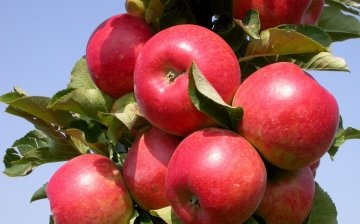
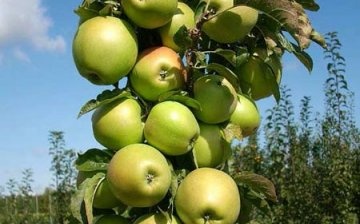
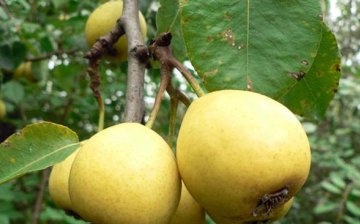
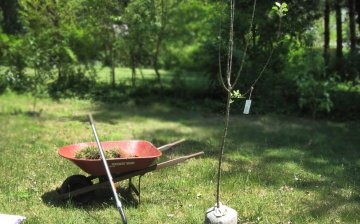
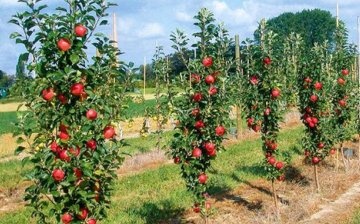
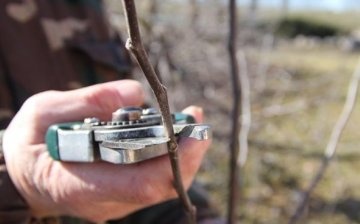
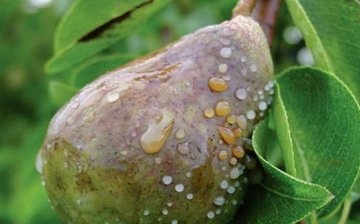







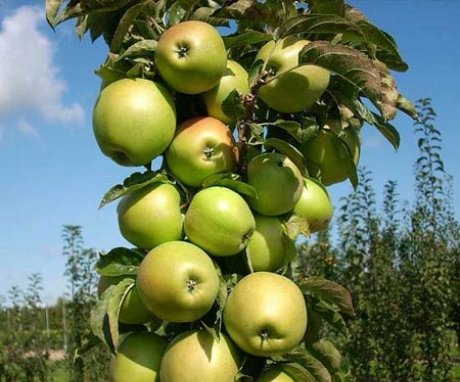
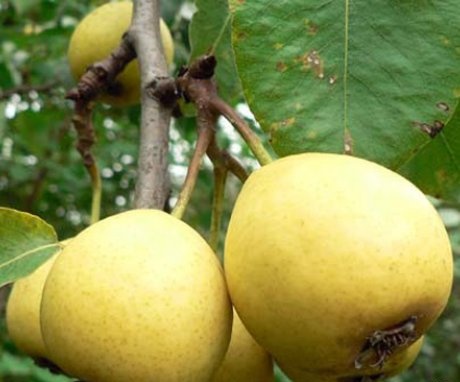

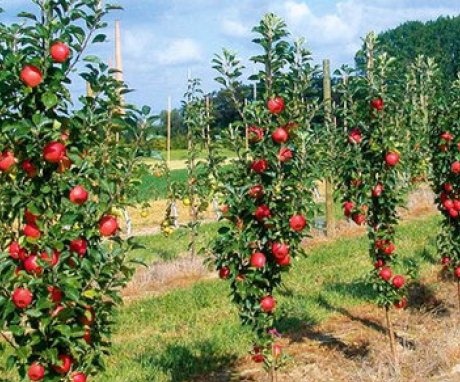

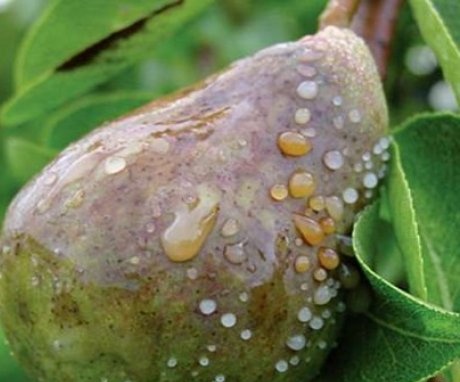
I have always thought that there is no need to prune columnar tree species. I assumed that the formation of the crown was genetically inherent in them. There will not be much shade from such trees and you can even form a flower garden under the tree.